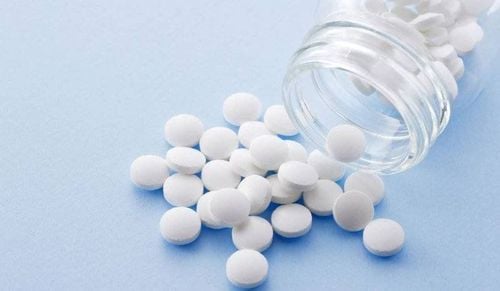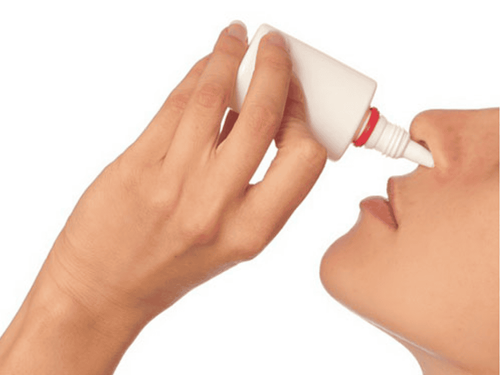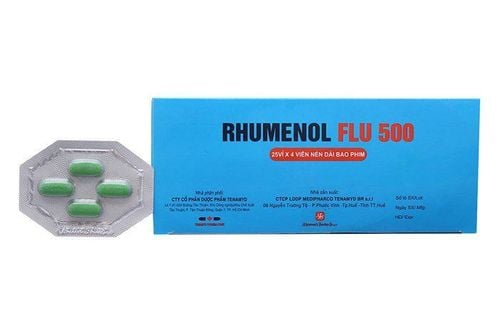This is an automatically translated article.
Pacifdine drug with the main ingredient is Loratadin belonging to the group of allergy drugs and is prescribed by doctors for use in cases of hypersensitivity. Refer to detailed information about ingredients, uses, to help patients use Pacifdine effectively.
1. What is Pacifdine?
What is Pacifdine? Pacifdine medicine has the main ingredient Loratadin, which belongs to the group of allergy drugs and is prescribed by doctors for use in cases of hypersensitivity.
Pacifdine is prepared in the form of film-coated tablets packed in boxes of 10 blisters x 10 tablets.
2. Indications and contraindications for Pacifdine
2.1. Indications Pacifdine is indicated in the following cases:
Helps relieve symptoms of seasonal allergic rhinitis, year-round allergic rhinitis, typically symptoms: sneezing, runny nose, nasal congestion, itching, eye irritation, watery eyes, red eyes, itchy throat, cough Helps relieve symptoms of chronic idiopathic urticaria. 2.2. Contraindications Pacifdine is contraindicated in patients with hypersensitivity to any of the ingredients in the drug or the main active ingredient Loratadin.
3. Dosage and how to take Pacifdine
3.1. Pacifdine is made in the form of film-coated tablets, so patients only take the drug orally. Patients should take with or without meals, helping to relieve symptoms of allergic rhinitis (such as intermittent allergic rhinitis, persistent allergic rhinitis) and urticaria.
With intermittent allergic rhinitis, the patient should be treated with an appropriate dose based on the assessment of the medical history, at the same time, treatment should be discontinued when the symptoms of the disease are resolved and treatment can be restarted when reappearance of symptoms. In persistent allergic rhinitis, treatment can be continued throughout the duration of allergen exposure. 3.2. Dosage The dosage of Pacifdine is as follows:
Adults and adolescents (≥12 years): Dosage is one 5 mg or 10 ml film coated tablet (5 mg) For children 6-11 years of age: Dosage: Dosage is 2.5 mg once daily. It should be noted: The above drug dosage is for reference only, patients need to take the drug exactly as directed by the doctor or pharmacist. Do not arbitrarily change the dose or use more medication than prescribed to speed up the treatment process.
4. Treatment of overdose and missed dose of Pacifdine
Missed dose: If the patient forgets a dose of Pacifdine, it should be taken as soon as he remembers. However, if it is too close to the time of your next missed dose, skip the missed dose and take the new dose as usual. Care should be taken not to use twice the recommended dose.
Overdose: When using, the patient should consider taking action to remove the active part of the drug that has not been absorbed. Elimination can be symptomatic and supportive.
In fact, a multi-dose clinical study in adults and adolescents using desloratadine up to 45 mg (9 times the clinical dose) did not observe clinical manifestations of overdosage. . Accordingly, Desloratadine is not excreted by hemodialysis, so it is unclear whether the drug is excreted by peritoneal dialysis or not. Therefore, when the drug overdose and dangerous complications appear, the patient should stop using and notify the doctor for timely examination and treatment.
5. Drug interactions
Drug interactions can occur when the patient is used in combination with 1 or more drugs to treat the disease. Thereby affecting the effect of the drug or increasing unwanted side effects.
Accordingly, when combined with desloratadine, may increase the peak plasma concentration of some drugs such as: erythromycin, ketoconazole, azithromycin, cimetidine.
Therefore, to avoid drug interactions, patients need to inform their doctors about the drugs, herbs, and supplements they are using. From there, the doctor will evaluate the drug interactions that occur and prescribe the appropriate medication.
6. Side effects when using the drug Pacifdine
During the use of Pacifdine, patients may experience some side effects with the following frequency:
Rare side effects: The patient feels tired, headache, dry mouth The side effect is very Rare: Anaphylaxis, Rash. During the circulation of drugs containing desloratadine on the market, there were very few reports of hypersensitivity reactions, tachycardia, increased psychomotor activity, palpitations, seizures, liver enzymes. increased, hepatitis and increased bilirubin.
Therefore, during the use of the drug, if the patient encounters any serious side effects, it is necessary to stop using the drug immediately and notify the doctor to be examined and change the dosage when necessary. .
7. Notes when using Pacifdine
Caution when using Pacifdine in the following cases:
Children < 12 years old: A doctor's prescription is required. Pregnancy: Due to the lack of clinical data on the use of desloratadine during pregnancy, safety cannot be established. In cases where it is imperative, pregnant women should consult a doctor, after weighing the benefits to outweigh the risks. Pregnancy: Desloratadine should not be used in nursing mothers, as it is secreted into breast milk. Drivers and Machines: At present, no effects on the ability to drive or use machines have been observed with desloratadine. Store Pacifdine in a cool, dry place, away from direct light. Before using the drug, the patient should consider the expiration date and observe the external appearance. If the drug shows signs of watery, distorted, the patient should not continue to use. See how to handle, break down, and dispose of medications.
Pacifdine drug has the main ingredient Loratadin belongs to the group of allergy drugs and is prescribed by doctors to use in cases of hypersensitivity. To improve the effectiveness of treatment, as well as avoid side effects, users need to carefully read the instructions and strictly follow the instructions and prescriptions of the doctor.
Follow Vinmec International General Hospital website to get more health, nutrition and beauty information to protect the health of yourself and your loved ones in your family.













